Last weekend we (the architects, artists, and planners) went on a thrilling, jam-packed 4-day trip to Southern Italy. We made stops in Matera, Paestum, Castellamare di Stabia, Herculaneum, and Napoli. Many of us packed for the possibility of slightly warmer weather, and unfortunately we met quite the opposite reality. Temperatures during the weekend hovered between 30 and 48 degrees fahrenheit (-1 to 8 degrees celsius). We came to Southern Italy and we saw snow. Unfortunately or fortunately, depending on how we all felt about snow we were only able to see the snow as we were driven through the snowcapped hills of Southern mainland Italy. However, despite the cold many of us saw sights that we would never forget.
Matera is perhaps one of the most magical cities. It is a city that is populated largely by people living in residential cave dwellings. Many of us were lucky enough to stay in a cave room with a bed for our first night in Matera. This small town of only about 30,000 people (in the “Sassi” or historic center) has an energy much greater than that of its size. It is a beautiful city built on a hill that was recently declared a UNESCO World Heritage Site. I went with the planners on a tour of the city center. We walked along the cliffs, visited one of the cisterns where water has been stored in the past to make it through the dry summer months and where ice was stored from the winter months, and we walked through the caved dwelling of the urban planner PhD student leading the tour. It was an extremely short visit, but it was a delightful one. Many of us spent our only night there after the tour looking at the stars and the spectacular view of Matera from our hotel.
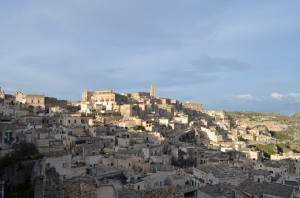
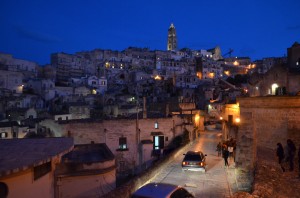
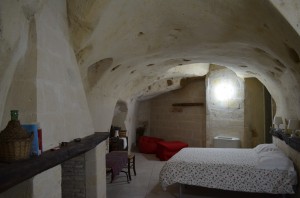
From Matera we went on to Padula where we visited Certosa di San Lorenzo and its contemporary art installations and viewed the gardens of the Certosa. In the afternoon we went to Paestum where we visited the Archeological Zone. We were lucky to have beautifully sunny skies as we looked upon the prominent Greek architecture within the archeological zone.
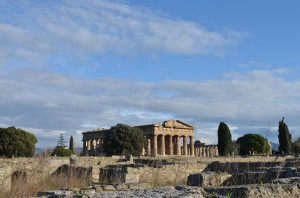
Afterwards we spent time in the museum visiting many of the exhibits displaying much of the historic artifacts. Many of us had a craving for gelato and went for a convenient break in a nearby gelateria. Afterwards we checked into Hotel Calypso where we enjoyed a wonderful free dinner and a view of the beach. While the water was freezing this time of the year it did not stop a few people from making a polar bear plunge into the water for a few quick seconds.
For the third day we departed to Castellamare di Stabiae, an industrial town along the coastline of Italy not too far from Naples. The planners and architects and artists separated at this point, so I can only comment on what the planners did during this time. We were led on a tour by many of the local shipmen about the redesign of the waterfront and the promotion of tourism. One thing that struck us was how beautiful this town was and the great potential it had to adopt tourism. However, we did see the perspective of those who currently were employed in the industrial sector and the threat a tourist economy would impose on the industry there. For planners it was an extremely educational visit and one that taught us about conflicts and tradeoffs.
Afterwards we departed for Herculaneum, a place that was destroyed like Pompei from the volcanic eruption of Mount Vesuvius in AD79. Jan Gadeyne toured us around teaching us about the history and noting the very small details that help us uncover the past. He also led the following tour of the Archeological Museum in Napoli where we looked at many of the exhibits showing a collection of Greek and Roman antiquities. Afterwards many of us went out into the city of Naples to get the best pizza of our lives.
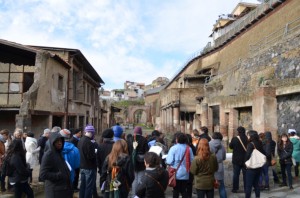
For our final day we spent our time in Naples exploring the city. The planners, architects, and artists went on walking tours of the historic center. The architects and artists went afterwards to Napoli Sotterranea (a system of Greco-roman tunnels under Napoli), while the planners met with Italian planning students from the University of Naples. I continued with the planners to our final stop, the science center, where we looked into how this industrial building was remodeled into becoming a community asset. The artists and architects spent their afternoon visiting the Museum of Contemporary Art and finished with a walking tour from the museum ending at the harbor front. After our great adventures in Southern Italy, we departed for our 3-hour bus ride back to Rome.
